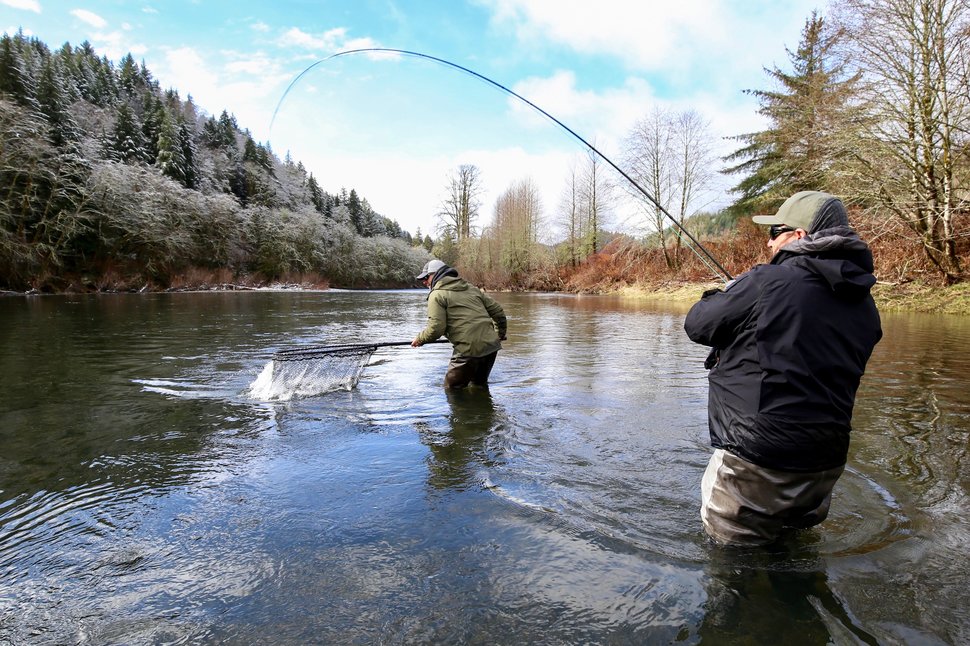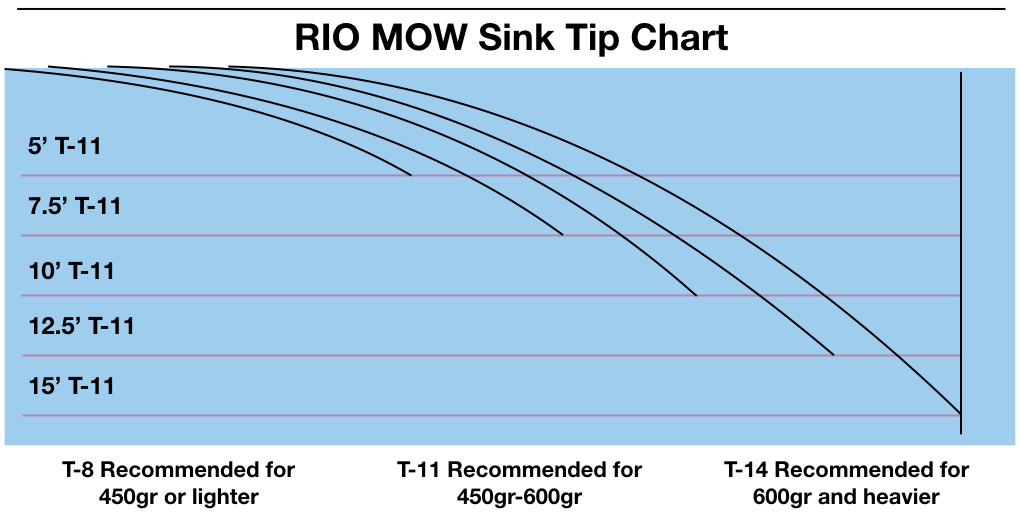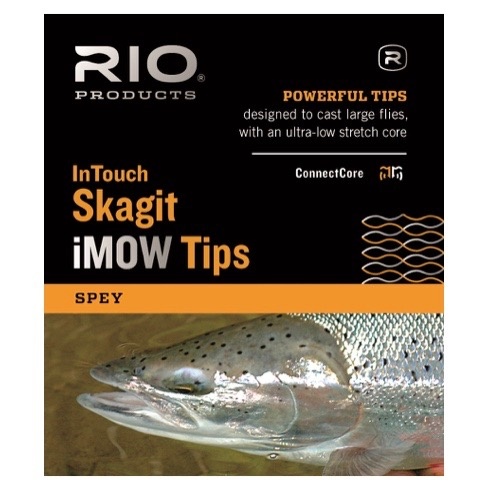Not all Sink Tips are created Equal

Sink tips are a confusing thing, and sadly there is not a simple, easy explanation.
A lot of customers come into the shop talking about how they aren’t catching any fish. My first thought is that it’s the sink tip. I always ask what tip they are using, and it’s either a poly leader or something short that isn’t getting down.
Here are a couple of important things to know.
- A poly leader is not a sink tip. Polyleaders are monofilament that has a thin coating of fly line material on them. They are typically used on Scandi lines to help transfer energy through the cast and to help turn over the fly. These are actually leaders and are considerably lighter in weight than sink-tips of equal length and sink rate.
- Not all sink tips are created equal. There are many sink tips with a variety of different names, lengths, and sink rates.
|
Polyleaders |
|||
|
10’ |
Clear Floating |
|
24 grains |
|
|
Intermediate |
1.5 in/sec |
26 grains |
|
|
Slow Sink |
2.6 in/sec |
30 grains |
|
|
Fast Sink |
3.9 in/sec |
32 grains |
|
|
Super Fast Sink |
4.9 in/sec |
56 grains |
|
|
Ex.Super Fast Sink |
6.1 in/sec |
76 grains |
When I started fishing with a Spey rod, there were basically "type" sink-tips. These are sink-tips that come in various sink rates and weights. The most popular were the 10wt in type 6 and type 8. Most of the time, I would cut them down to 12’-13’ feet for ease of casting. At that time, Skagit lines weren’t available yet, so anything you could do to make casting easier was welcome. When I was learning to cast, I could get a type three sink tip to hang up on the bottom with an unweighted tube fly. It wasn’t by choice but because the tip wouldn’t turn over, and it would land in a pile.
In the past few years, fly-line technology has advanced by leaps and bounds. We have Skagit lines that enable us to cast heavy deep fishing tips with big flies easily. There are multi-density lines and tips that help slow your swing down and get your fly extra deep. The hardest part is wading through all of the different choices to get the right setup. In the shop, we carry sink tips from RIO, Airflo, Scientific Angler, and OPST, we probably have 100 different tips to choose from. When you are wading through all of the tips, there are basically two different styles to choose from, type tips and level T tips.
Type tips typically come in a fixed length and sink at different rates. Type 3 = 3 inches per second, type 6 = 6 inches per second, up to a type 8, which sinks at, you guessed it, 8 inches per second. So if you want to get deeper, you use the type 8 and if you want one that fishes more shallowly you use a less sinking one (Type 3 or 6).
|
RIO Type tip |
||
|
Type |
Sink Rate |
Loop Color |
|
Type 3 |
3-4 ips |
Yellow |
|
Type 6 |
6-7 ips |
Gray |
|
Type 8 |
8-9 ips |
Green |
The level T tips (or MOW tips) typically come in grains per foot and just sink at one speed: Fast. Most of the T material sinks around 8 inches per second. When you hear someone say I was fishing T-11, this is what they are talking about. The Level T tips come in a variety of weights from 7 grains per foot up to 20 grains per foot. With these tips, we use length to adjust our depth. Longer tips get deeper, and shorter tips fish more shallow. The benefit of these tips is they get down fast, so you are fishing almost immediately.

I find that it is best to choose one style of tip and stick with it; that way, you gain some understanding of how deep your fly is sinking, and you are able to make more adjustments to the depth you are fishing.
I personally fish RIO’s MOW tips. The original MOW tip is a system developed by Mike McCune, Scott O’Donnell, and Ed Ward. These tips are level T tips with different weights and lengths of sink tip material. The sinking portion varies from 2.5’ - 12’ in 2.5’ increments. The ones that are under 10’ long have a floating back portion so that they all equal 10’. This helps with casting and turnover.
RIO MOW Tip Selection
7.5’ float with 2.5’ sink
5’ float with 5’ sink
2.5’ float with 7.5’ sink
10’ sink
12.5’ sink

When I first step into the water, I usually have a sink tip in mind; normally, I start with 12.5’ of T-11. That is my go-to sink tip for winter fishing. If I find that I am hanging up more than every once in a while, I go to a shorter tip. You should be fishing deep, but not so deep that you are always hung up on the bottom, and losing flies left and right.
A couple of final thoughts about tips.
As I mentioned before, there are a lot of sink tip options out there, so it’s hard to know exactly what to get. My go-to sink tip selection looks like this
1- 12.5’ medium Mow (11 grains per foot)
2- 10’ medium mow
3- 2.5’ float x 7.5’ medium MOW
If I feel I need to get a little deeper, I will put a heavier fly on and a longer leader.
Counterintuitively to what you might think, when the water is really high, we quite often use a shallower fishing sink tip. When the water is high, the fish aren’t out in the middle of the river; they are typically on the soft inside edges. So you need a dip that doesn’t get as deep that will fish into those soft edges without hanging up before it gets there.
When the water is really low, the fish are often in the deepest parts of the river, and a deeper fishing tip might be a good idea. The downfall with this is that when your fly swings into the shallower part, you are more likely to hang up.
 |
 |
 |
| RIO Skagit MOW | 3D MOW Tip | Rio Skagit iMOW |
 |
 |
 |
| OPST 10' Commando TIp | OPST 12' Commando Tip | RIO 15' Type Tips |
 |
||
| AIRFLO FLO Tip |




